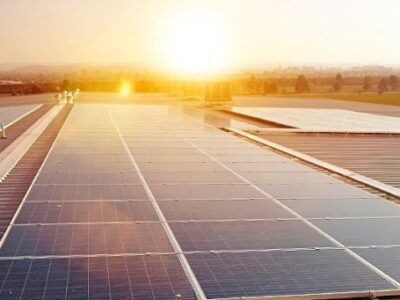A collaborative effort in Virginia to power nearly two dozen more schools with solar energy could serve as a model for other school systems across the country, while further enhancing the Old Dominion State’s reputation for advancing sustainability policies. The latest initiative, announced in December, involves a partnership between 21 Virginia schools, Dominion Energy subsidiary BrightSuite Solar, and clean energy company Sun Tribe Solar.
Solar panels will be installed either atop school buildings or by mounting them on the school grounds. The renewable energy generated won’t just fulfill part of the schools’ power needs – it will also lower their electricity bills through a net metering program financed by BrightSuite. Under terms of the power purchase agreements, the school districts will pay no upfront costs while getting long-term energy savings.
Schools getting the solar panels are spread across the following cities or counties in Virginia (total schools listed in parentheses):
- Arlington (1)
- Fluvanna (5)
- Hanover (4)
- King William (2)
- Newport News (1)
- Powhatan (4)
- Virginia Beach (4)
Solar panels in these municipalities are expected to generate more than 11 megawatts of solar energy at peak output. Over their lifetime, the projects will help schools offset the equivalent of more than 310,000 tons of carbon dioxide, according to a press release from Dominion Energy. The environmental impact equals planting more than 4.7 million tree seedlings over a decade or taking more than 60,000 cars off the road for a year.
Financing, due diligence, and compliance expertise were provided by BrightSuite, which supplies technologies and services designed to help customers meet sustainability and renewable energy goals. Sun Tribe, a provider of energy advisory and delivery services, will take care of development, engineering, procurement, construction, and operations and maintenance services for the schools’ solar panel systems.
Virginia has been among the nation’s leaders in outfitting its schools with renewable energy sources. As reported by the Energy News Network in September, Virginia last year rose 12 spots and into the Top 10 nationally in total solar capacity installed. Since 2017, schools in the Old Dominion State climbed from 20th place to eighth place in the national rankings.
Meanwhile, the number of Virginia schools adopting solar power grew to 89 from 29 over the preceding two years, while installed solar capacity rose more than 10-fold from 1.9 megawatts to over 20 MW.
Nationally, just more than 7,440 schools were outfitted with solar power at the end of 2019, according to a report published through a partnership between Generation 180, the Solar Foundation, and the Solar Energy Industries Association. That number represented only 5 percent of K-12 public and private schools. Over the preceding five years, capacity more than doubled from 560 MW to 1,337 MW. At the end of 2019, South Dakota was the only state without a solar school.
Beyond helping schools operate more sustainably, another advantage of solar installations is that the money schools save on power bills can go toward other upgrades. This has been especially important during the COVID-19 pandemic, which has contributed to job losses and economic stress in many communities.
“Helping schools make the switch to solar can uplift our communities, drive our stalled economy, and insulate our schools from the effects of climate change,” said Abigail Ross Hopper, president, and CEO of the Solar Energy Industries Association. “It’s rare to find a solution that can solve many challenges at once.”
Power purchase agreements have been cited as a boon to solar power initiatives in Virginia and elsewhere. These agreements provide third-party financing options that reduce the cost to school systems, opening the way for more solar installations. The third-party owner is typically a solar developer that can qualify for federal investment tax credits and is responsible for buying and maintaining the panels. Credits obtained by customers can then be sent back to the grid to offset bills.
Virginia got a boost a few years ago when lawmakers there raised caps on power purchase agreements to 500 MW from 50 MW. Virginia is now one of 28 states that allow third-party financing for solar.
Savings for school districts can be substantial. Pete Gretz, superintendent at Middlesex County Public Schools – a rural, three-school district in Virginia’s Middle Peninsula coastal region – expects his district to avoid $4.74 million in electric bills over the next three decades due to solar panels totaling 1.93 MW.
“Utility costs are one variable that could bounce around every year,” Gretz told the Energy News Network. “Solar is a no-brainer because the cost of energy never goes up. We’re locked in for 30 years at the high school and 25 years at the elementary and middle schools.”





